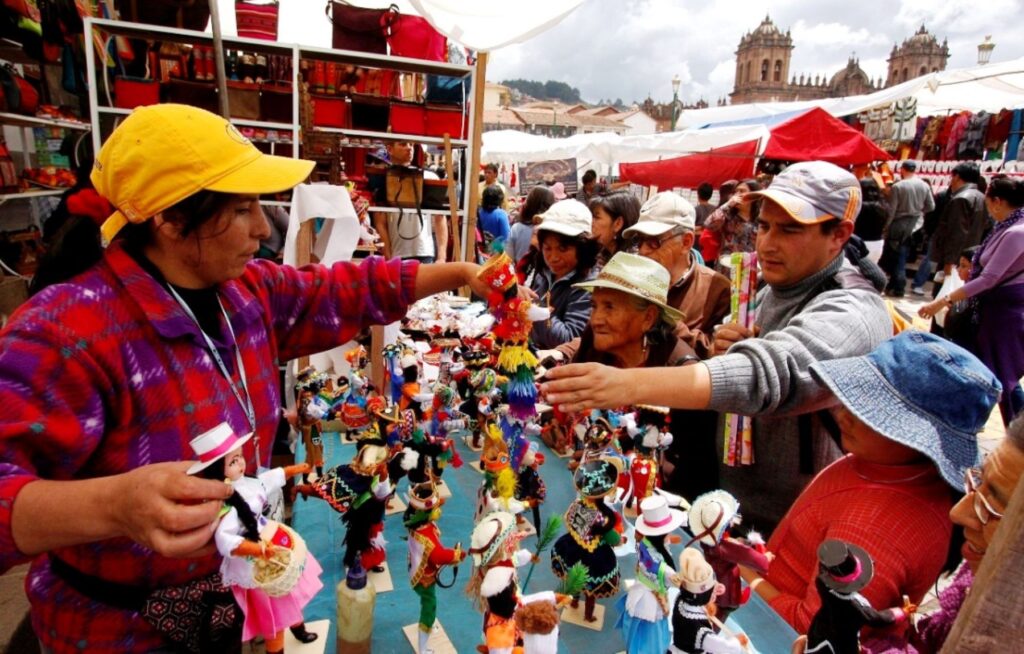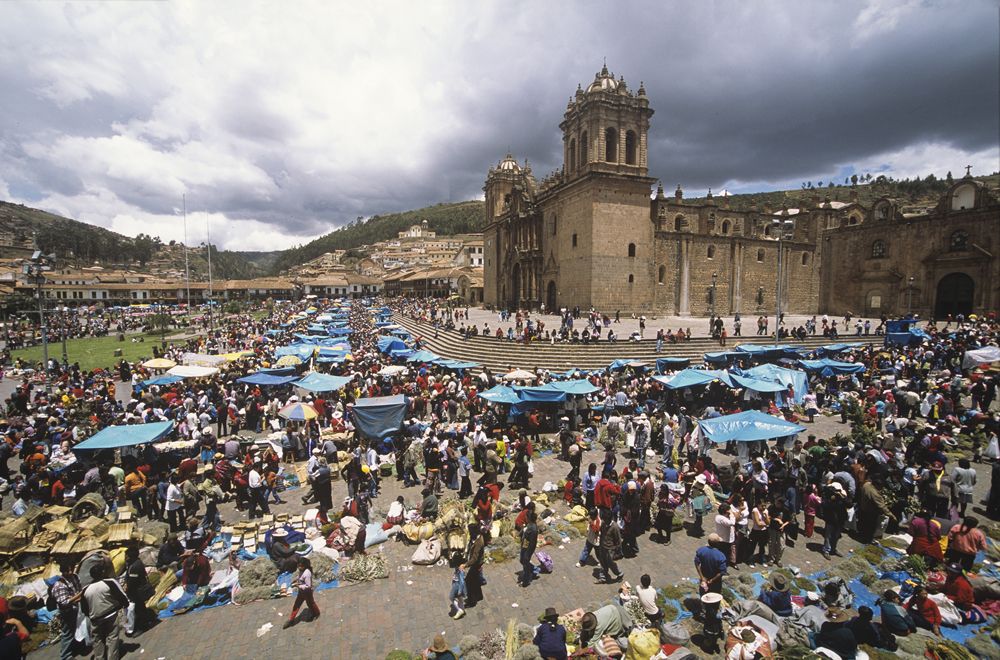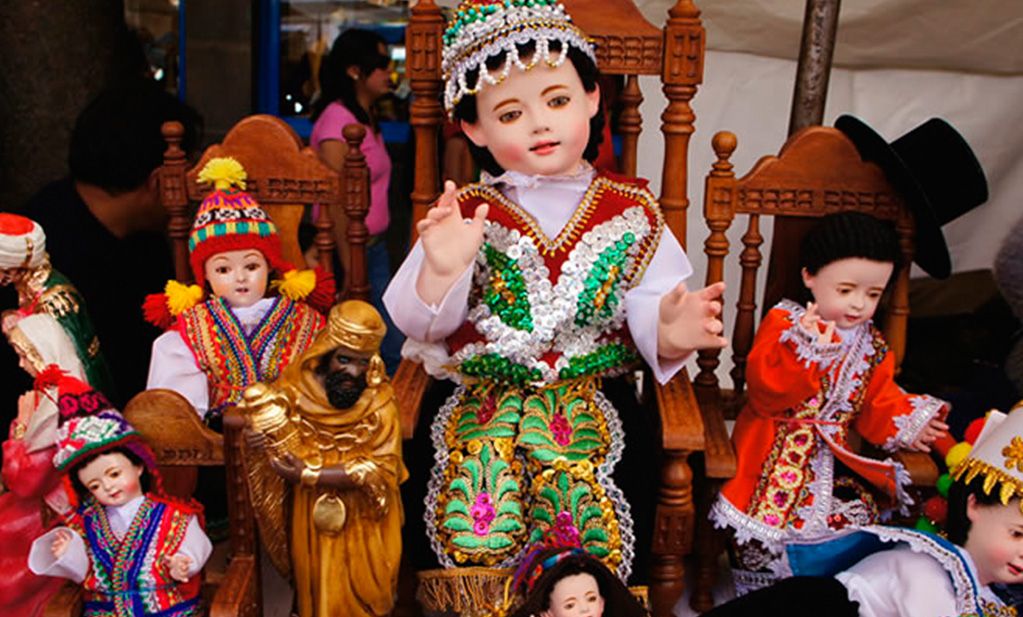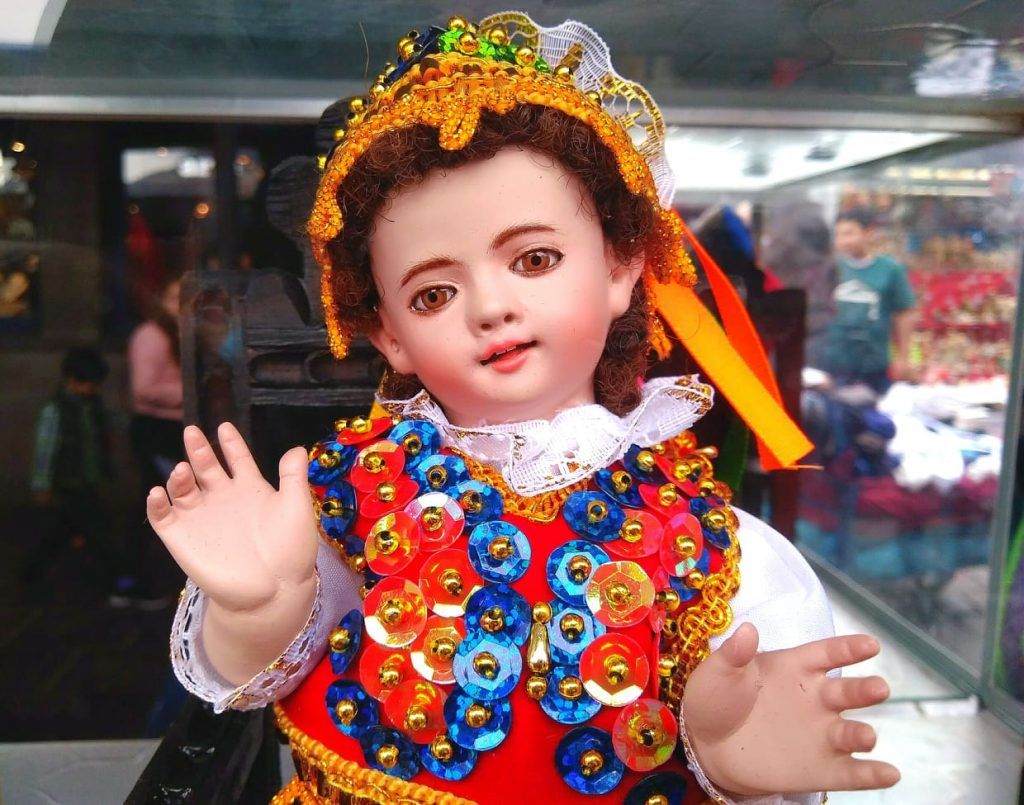
The celebration of Christmas in Cusco acquires a special touch, because many traditional activities are organized around traditional festivals. The city is impregnated with a festive atmosphere, full of lights, ornaments and arrangements with Christmas motifs.



El Santurantikuy in Cusco, the largest popular art fair in Peru
The first days of December, the municipality of Cusco adorns with garlands the balconies of the monumental center, in the surroundings of the Plaza Mayor. It is in this cultural center of the city where one of the largest folk and folk art fairs of Peru is installed : The Santurantikuy fair , where hundreds of artisans from different areas of Cusco meet to expose their creations to decorate the homes and institutions of those who visit this place full of magic.
Santurantikuy, what does the name of the fair mean?
Shortly after the Spanish colony was established in Peru, the Inca empire ended and the Catholic religion was assimilated, what was known as the Santurantikuy festival, a collective Christmas celebration, began to be celebrated in each Plaza Mayor. which consists of a popular art fair that is prepared six months in advance. In Quechua it is translated as Santu (saints) and Ticuy (sale).
The boy Manuelito, central figure of Santurantikuy
The child Manuelito is the central character of the Christmas party in Cusco and it is simply the baby Jesus. The chronicles of the colony report that towards the 17th century, the Spanish priests toured the towns trying to catechize the natives of the native zone. Particularly, Christmas in Cusco, spoke of «Emmanuel», the child born in Bethlehem and whose name means «God with us.» Then, the figure was transformed into «the Manuelito child «.
The image of the Manuelito child is exposed in different attitudes. Some have a face with red badges, a mischievous look, Indian skin and open arms as a sign of welcome. Others have sculpted tired and almost asleep, sometimes thoughtful and smiling. There are also crawling with their heads trying to stand up.
However, despite the imposition of the Catholic religion, the Andean natives have not forgotten their religious traditions, keeping them hidden or syncretized with the new religion that arrived from Spain. To this day they continue to venerate their deities in nature:
-
- The apus, mountain spirits.
- Pachamama, mother earth.
- The Inti, the Sun as divine maker.
Currently, the Santurantikuy fair in Cusco has become one of the largest craft fairs in Peru . There you can see all kinds of handmade objects, mainly objects carved in wood, ceramics and altarpieces. During the nights the traditional punches are sold to warm the body.



